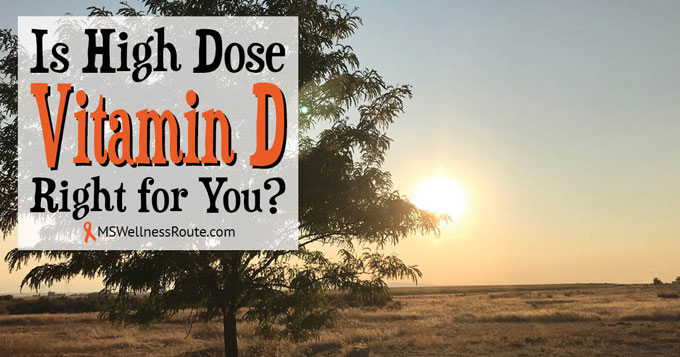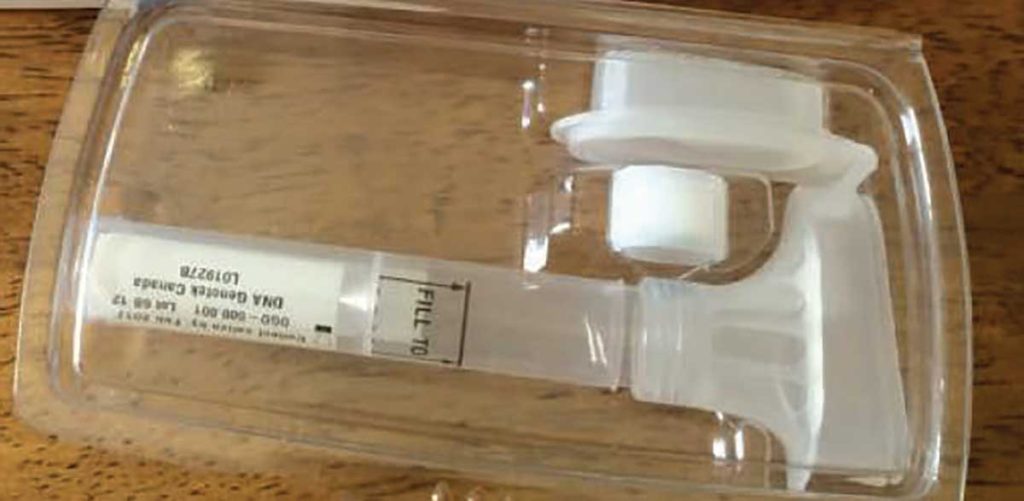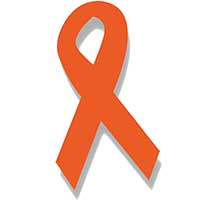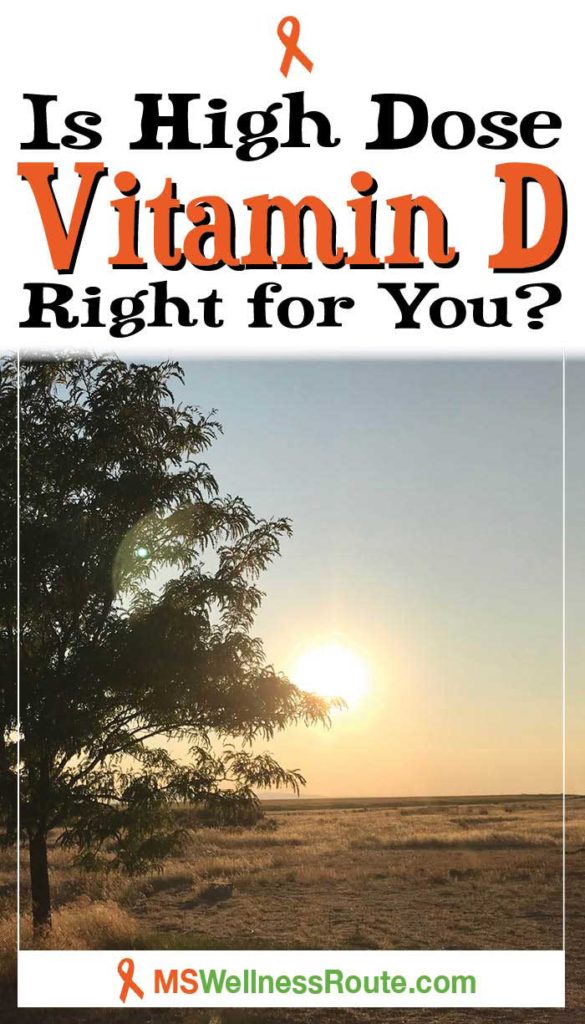Last Updated on December 5, 2023 by Cathy

Vitamin D, also known as the sunshine vitamin, is a vitamin that acts like a hormone. It is found in a few foods like fatty fish and egg yolks. You mostly get vitamin D by exposing your skin to sunlight. Your body needs vitamin D to reduce the risk of chronic diseases such as multiple sclerosis (MS).
Diet is a poor source of adequate vitamin D, it’s best to get it from the sun. Unfortunately, not everyone lives in an area where they get enough sunlight throughout the year. That’s when taking a vitamin D supplement is important.
However, if you have a mutated vitamin D receptor (VDR) gene, your body isn’t absorbing vitamin D as it should. The recommended daily amount of vitamin D for adults is 400 IU but if you have a mutated gene then 400 isn’t enough.
Vitamin D
Lack of vitamin D is a risk factor for rickets, autoimmune diseases, and some cancers. It helps the body absorb calcium, promote bone growth, and regulate the immune system. Most people with MS have a vitamin D deficiency.
Get your vitamin D tested! Ask your doctor to get tested or use an online lab like Walk-In Labs. Even the Vitamin D Council recommends taking 5,000 to 10,000 IU per day to prevent the flu. – A neurologist should test all their MS patients to see if they have a vitamin D deficiency.
DNA

Researchers discovered VDR genes that respond to vitamin D activity within the tissues. Certain genetic variants can raise a person’s risk for vitamin D deficiency. There are over 11,000 search results on PubMed for “vitamin D genetics.” One study found an MS genetic risk variant within the gene AHI1. This gene may contribute to the disease progression.
The HLA-DRB1 gene is highly correlated with a higher risk of MS. One theory suggests people get enough vitamin D during certain times in their lives. What time is still unclear since living in a sunny area as a child lowers the risk. Yet, moving to a colder area raises a person’s risk.
Genes load the gun, environment pulls the trigger.
Many of the genetic factors involved in MS are also shared in other autoimmune diseases. Such as type 1 diabetes, lupus, and Crohn’s disease. People of European ancestry are at a higher risk for MS.
I had my DNA tested several years ago through 23andMe. No one in my family has MS so I didn’t think it was hereditary. I was very shocked to learn I was at a 3x higher risk for MS. I had no idea I had inherited these genes from my parents. However, because a person inherits these genes it doesn’t guarantee they will get the disease. It’s the environmental triggers that cause the disease.

The VDR gene also plays a role in the gut microbiome which is another connection to MS. Researchers discovered people with MS have different levels of gut bacteria compared to healthy people.
To learn more about getting a DNA test, read DNA Test For Multiple Sclerosis.
Bone Loss
During the 1930s and 1940s, people used large doses of vitamin D. This was a time when nutritional deficiencies were high due to the economy. Food manufacturers began to make vitamin D-supplemented foods that were poorly mixed. So people who were already taking large doses of vitamin D were getting toxic levels.
Today, doctors take a very conservative approach towards vitamin D.
They consider 30ng/mL to be at a normal level. But, if you have an autoimmune disease, you should be somewhere between 60-80 ng/mL. Plus, if you live in northern latitudes, work indoors, or are homebound you are deficient in vitamin D.
Since vitamin D strengthens bones and most people are deficient. Hip fractures have gone up, due to osteoporosis. People with MS are also at a higher risk for osteoporosis. And since they also are at a higher risk of falling this makes for a really bad combination. Even a low vitamin D level puts a person at a higher risk for hip fractures.
Quick Links to information in this post:
• Multiple Sclerosis and Vitamin D
• DNA Test for Multiple Sclerosis
High Dose Vitamin D
Dr. Cicero Galli Coimbra, a neurologist, from São Paulo, Brazil developed the high-dose vitamin D protocol, The Coimbra Protocol. Working with his patients he has stopped the progression in about 95% of his patients. This protocol is for anyone with an autoimmune disease not just MS.
The protocol uses ranges of vitamin D from 40,000 IU to 300,000 IU each day. Depending on each person’s blood work. To keep from getting a toxic overdose. You MUST be under the supervision of a qualified specialist who has trained in high doses of vitamin D.
In 2001, Dr. Coimbra started giving his patients with Parkinson’s disease a dose of 10,000 IUs per day. 10,000 IU is a safe dose our body produces after a few minutes in the sun. After seeing clinical improvements he began to look into high doses for his patients with MS.
Doctors recommend not going over 600 IU per day of vitamin D. But, this is way below what adults, even healthy adults, should be taking. Dr. Coimbra recommends all adults take 10,000 IU of vitamin D daily without worrying about toxic levels.
No studies have proven that 10,000 IU’s of vitamin D is toxic. Toxicity generally starts to appear when a person is taking 50,000 IU per day for many months. There is no documentation of vitamin D toxicity in people with a blood level of less than 200ng/mL.
The worry isn’t vitamin D itself, it’s what vitamin D does to a person’s calcium level that’s a concern. Taking high doses of vitamin D raises calcium levels. That’s where the toxicity comes from. That’s why it’s very important to work with vitamin D specialists and to get blood work. The vitamin D specialists will adjust your vitamin D depending on your blood work.
Dietary

The Coimbra Protocol requires a person to restrict all food items that are high in calcium. It’s important to stop eating and drinking all dairy products and calcium-enriched foods or beverages. Such as milk, cheese, yogurt, condensed milk, cream, butter, or caramel. Also, avoid products made from soy milk or orange juice enriched with calcium.
You will need to avoid food that uses milk in its ingredients. Such as baked goods, sauces, or mashed potatoes. Avoid nuts because they are high in calcium. Also, drink 2.5 liters of water every day to help flush the calcium. This will prevent calcium from depositing in the kidneys.
Testing
You will need to get some blood work before starting the protocol. This will give your doctor a baseline of where to start. If you’re not physically visiting your doctor you will need to get your tests done from your area. If your local doctor is unwilling to help you can get these tests done using an online lab.
Supplements
Vitamin D is fat-soluble so take a good quality vitamin D, liquid form, or oil-based soft gel is best. Avoid tablets due to poor absorption and their use of fillers. It’s best to take vitamin D with food, preferably with your largest meal. People who live the longest and have the fewest disease eat their largest meal in the first half of the day. If you are very deficient in vitamin D you may feel some bone pain as your body is healing.
Magnesium transports vitamin D around the body. It converts it from an inactive form to an active form. The higher your dose of vitamin D the more magnesium you will need to take. Magnesium is found in foods such as dark leafy greens, avocados, and bananas. It’s best to also include a supplement since high doses of vitamin D can deplete the body of magnesium.
Vitamin K2-M7 used to be prescribed by Dr. Coimbra but he no longer does. He claims he has observed a high dose of vitamin D (over 20,000 IU per day) changes bone metabolism. Rendering vitamin K2 is ineffective for directing calcium to the bones. He says a patient can take vitamin K2 if they want but it won’t protect their bones or kidneys. Instead, he recommends a patient do cardiovascular exercises and stay hydrated.
Supplements will differ depending on each person’s blood work. You will probably take other supplements. Such as riboflavin (vitamin B2) and vitamin B12. DO NOT try to follow this protocol without a vitamin D specialist.
Lifestyle Changes
You need to stop all your bad habits like smoking, you should do that anyway. The Coimbra Protocol is not a cure. This is a lifestyle change just like using food as your medicine. You will need to do this for the rest of your life until they find a cure. And like the diet, if you don’t follow the protocol MS symptoms will flare back up.

Sources of Vitamin D
Subscribe for free and I’ll send you the password to my secret library filled with many printables including Sources of Vitamin D.
Want to remember this pin? Pin it to your favorite Pinterest board!

Resources:
https://www.ncbi.nlm.nih.gov/pubmed/29409597





